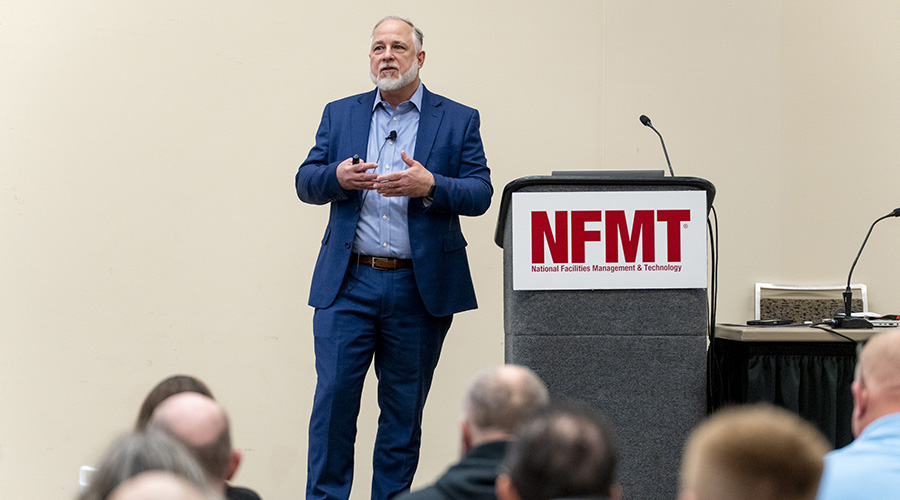The facility management industry, particularly within government and large organizations, is facing sweeping changes due to administrative shifts, budget cuts, and mandates for workforce returns. These pressures — colloquially dubbed the “DOGE Effect” — are creating both risks and opportunities for facility management professionals.
As Paul Head, director of Nuvolo, explains in this video from NFMT Baltimore, understanding how to respond strategically is critical for future success.
At the forefront of today's challenges are early lease terminations, headcount reductions, and shrinking budgets — all while demands for building maintenance and occupancy support increase. Facility managers must now operate with fewer resources but higher expectations, all under greater scrutiny. These changes can initially feel like a crisis, but with the right approach, they can drive innovation, efficiency, and organizational improvement.
A key risk associated with these disruptions is the degradation of preventive maintenance programs. Historically, facility operations maintained an 80/20 balance between preventive and reactive maintenance. However, staffing and budget cuts can shift teams into a reactive mode, accelerating asset depreciation and increasing unexpected capital expenditures. Without intervention, this can quickly spiral into higher operational costs and reduced facility reliability.
The solution lies in strategic planning and proactive adaptation. Facility leaders must use this disruption as a catalyst to reassess and streamline operations. This means adopting a "wargaming" mindset — identifying critical vulnerabilities, planning for resource gaps, and simplifying bloated or outdated processes. Emphasizing core fundamentals, such as maintaining accurate asset inventories, standardizing maintenance procedures, and regularly updating standard operating procedures, is essential.
Log in or join fnPrime to learn more by watching the video and earn continuing education credits.





